PRS Performs Intricate Airport Cuts
BY Tom Kuennen
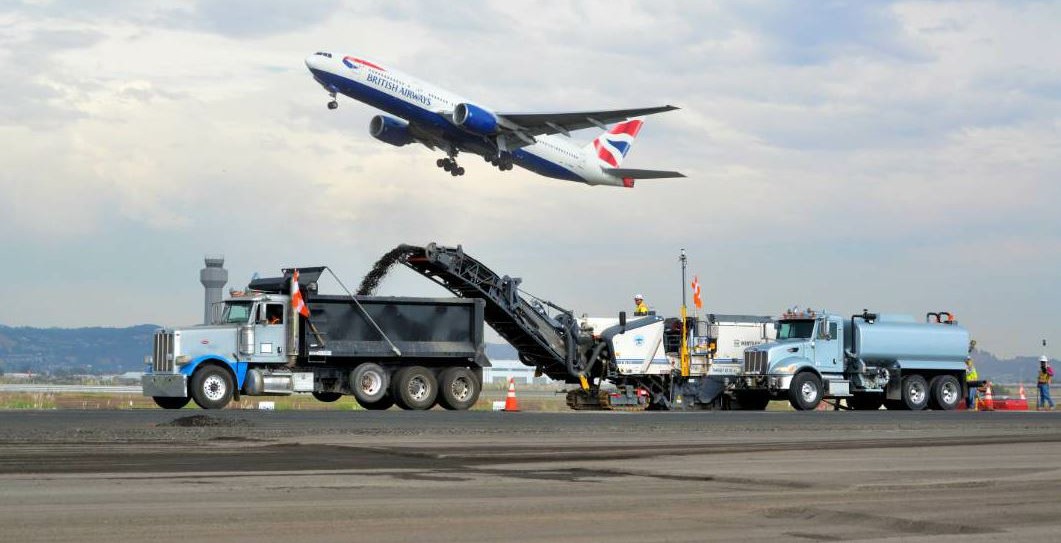
Milling nonstop day and night, milling subcontractor Pavement Recycling Systems Inc., Jurupa Valley, California, cut a veritable mountain of reclaimed asphalt pavement (RAP) from Oakland International Airport Runway 12-30 along the shore of San Francisco Bay. That first phase was followed by a much shorter, second phase a week later. In total, they milled 47,000 tons of asphalt within a 60-hour time frame, plus the single-shift second phase.
“We started milling at 6 a.m. Monday, Sept. 11, and we worked 12-hour shifts nonstop until about 3:30 p.m. Wednesday,” Kurt Eddy said. He’s the operations manager for milling and restructuring, for PRS.
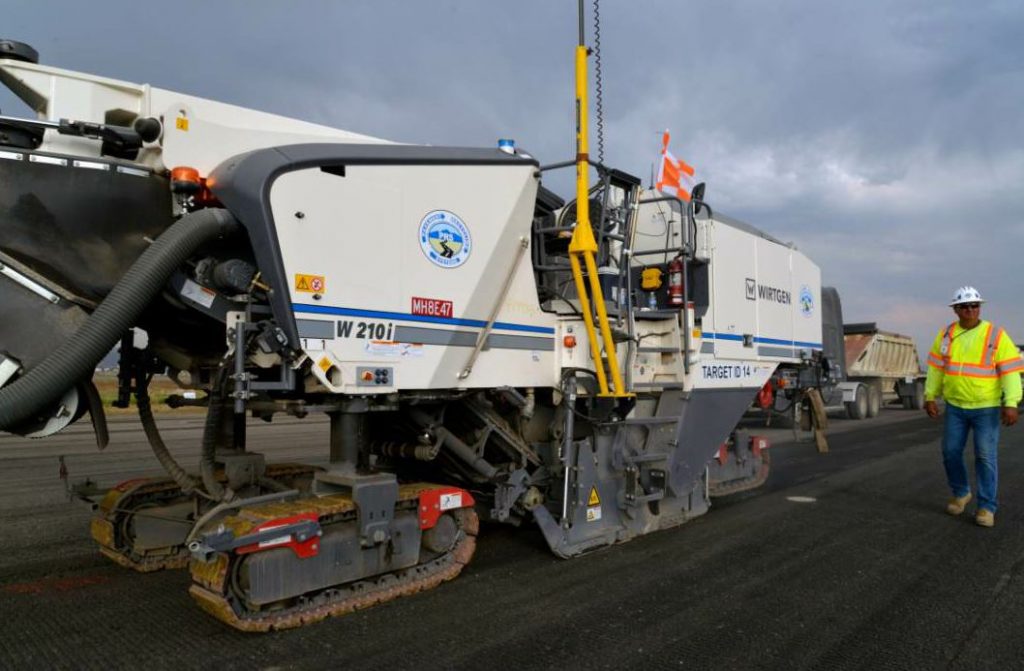
The W 210i has dual diesel engines, generating a total 720 horsepower with both engines engaged. Going for maximum productivity, PRS used both engines for maximum cutting power.
Immediately after, the prime contractor—DeSilva Gates Construction, Dublin, California—began paving. The tight window of construction was driven by substantial liquidated damages of over $700,000 per day if the general contractor didn’t open the runway on time.
“DeSilva Gates made the deadline,” Eddy said. “They killed it. PRS appreciated the opportunity to work for DeSilva Gates. They are a fantastic general contractor to work for. Everything we needed to support our operation was provided, and then some.”
All raw, 3.5-inch-minus RAP was kept on the airport property. It was used to correct elevations of taxiways, building up a levee along the bay shoreline, and other construction purposes.
The mills cut at their standard width of 7 feet, 3 inches, according to Terry Graves, superintendent for PRS. The challenge was not the width of the passes, but the varying depths of the cuts.
PRS has one of the largest milling fleets in the United States, Eddy said. While all are not Wirtgen Group machines, their W 210i mills were on the job for this time-critical project.
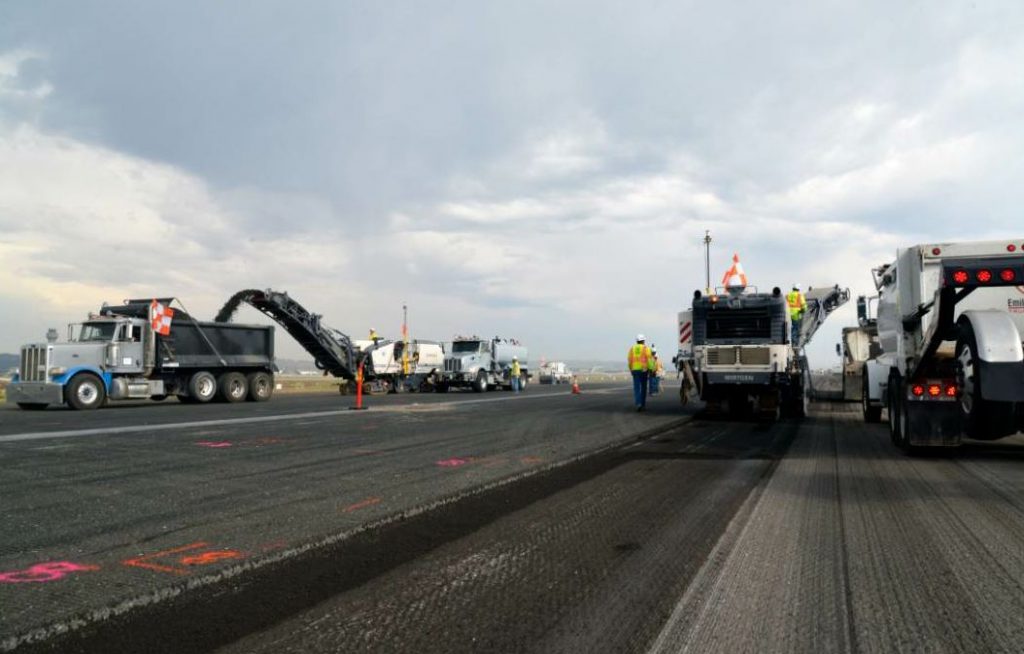
Kurt Eddy said cutting to the digital models, and staying within the confines of the many different models, was one of the biggest challenges of the Oakland International Airport Runway 12-30 job.
“We all had extremely tight time constraints,” Eddy said. “We chose the W 210s due to our experience with this model.”
With the W 210i, three selectable engine speeds enable complete pavement removal at a full depth of 13 inches. But at OAK, the depths of cuts varied constantly.
“Cutting to the digital models, and staying within the confines of all the different models, was one of the biggest challenges of this job,” Eddy said.
“The Wirtgen mills were compatible with the Trimble total station system we used on this project,” Graves said. “The speed and the depth varied so much, as we went from cutting zero in some areas, to 11 inches in other areas, depending on what the digital models required.”
In fact, there were five different models they used to control grade, Eddy said. “There were benches of pavement remaining everywhere, at all different sizes, shapes and depths,” he said.
“Areas of distressed pavement were identified prior to the milling operation, and they were built into the digital models,” Graves said. “There was a minimum requirement of asphalt to be removed for each. The asphalt was to be milled out at 3-inch increments, so if we had to cut 8 inches, we had to go 9 inches deep.”
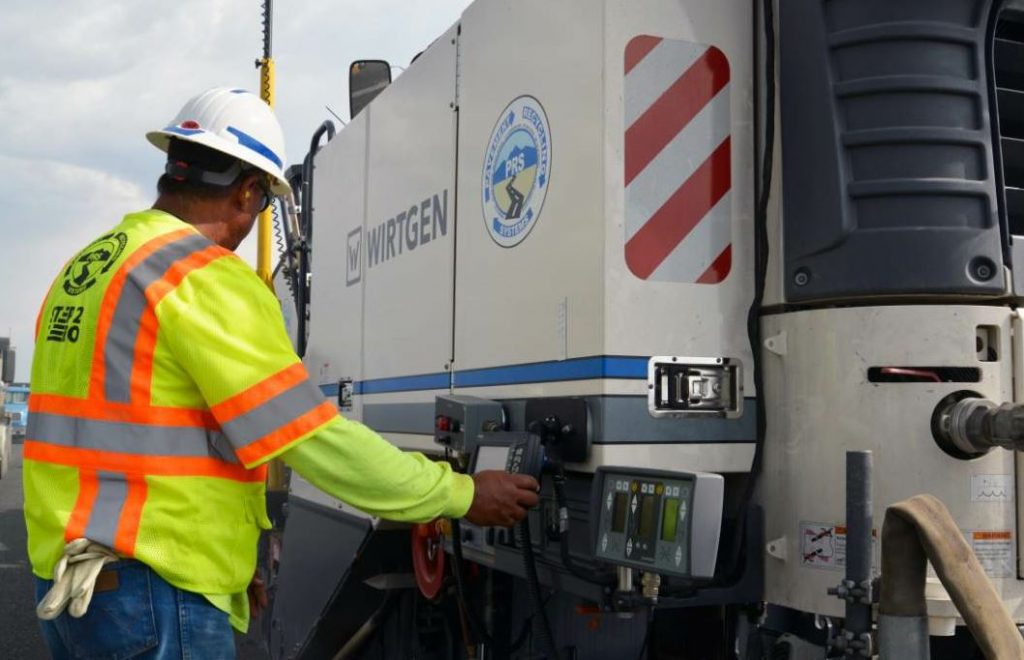
“The system received a radio signal, sent that signal to the LevelPro, which converted it to Wirtgen’s ‘language’ and made the appropriate grade changes based on the elevation it’s requiring to be at,” Kurt Eddy said.
The changes in models were marked using limit lines on the runway surface. “As we would come up to another line painted on the pavement, it would have a model number which we’d have to change in the settings,” Eddy said. Essentially, PRS would mill at one depth to a limit line; stop and change the model that they were running to get to the new depth prescribed by the model; then proceed to the next line, where the model would have to be changed once again.
“We would work in a lineal fashion, and from left to right, within the confines of the models in order to cut the proper areas the way they wanted,” Eddy said. “String lines were painted all over the runway to identify the different models. We could not just start at one side of the runway and go across laterally. Instead, areas were specified for the models. If you overlapped the model you would run into a different model. The problem with overlapping was, that if you wandered off the area, you would be off-model and essentially off-grade. Therefore, it was imperative that we milled within the confines of each painted out model.”
The Trimble total station system interfaced seamlessly with Wirtgen’s Level Pro system, the automatic leveling system that regulates the pre-set milling depth and actual readout electronically.
“The system received a radio signal, sent that signal to the LevelPro, which converted it to Wirtgen’s ‘language’ and made the appropriate grade changes based on the elevation it’s requiring to be at,” Eddy said. Accuracy of milling was within 100ths of a foot.
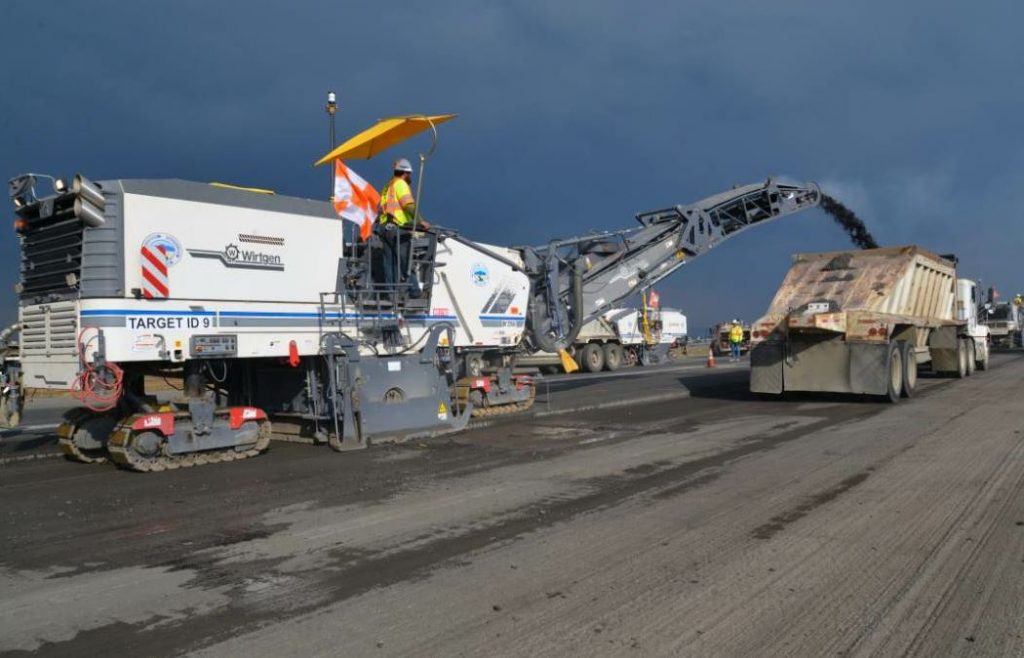
In total, PRS milled 47,000 tons of asphalt within a 60-hour time frame, plus the single-shift second phase.
“Due to the variable cutting depths that were required, we weren’t able to just go in and operate at 100 percent load all the time,” Eddy said. “Otherwise our time line would have been a lot shorter for pulling the tonnage out that we did. Instead we had to run on virtual string line, which reduced our opportunity to go to max production.”
Wirtgen’s Parallel-to-Surface technology, which is designed to automatically keep the cutter housing level as the W 210i moves into a cut, accelerated production. “We set-in hundreds of times out on the airfield and used it on every machine, over and over, because of the way the job was cut up with multiple depths,” Eddy said.
On Runway 12-30, the extremely dense, FAA mix had been compacted even further by years of airliner landings. Nonetheless, there were no mechanical problems during this time-critical project.
“There were no breakdowns the entire time,” Eddy said. That was particularly important, given the logistics of getting personnel into a secure facility, truck movements, marshalling fuel and water supplies, and loss of production to changeovers to different digital models within the 60-hour period. “The fact that we had zero breakdowns, and the machines performed the way we expected them to, took downtime out of the equation,” Eddy said.
Eddy thanked local distributor Nixon-Egli Equipment Co. and Wirtgen America for its loan of the W 220i as backup, and PRS was able to use the new machine toward the end of the project as one of the W 210i mills was dispatched to another job.
